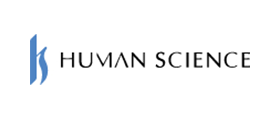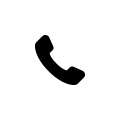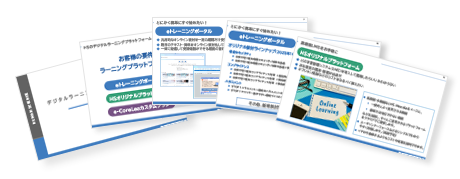2022.10.14
To avoid copyright infringement and compliance violations
The modern era has seen a rapid increase in digital networking due to the widespread use of the internet, creating an environment where various information can be easily accessed. However, this information can also be easily copied by anyone, making it essential to have a moral understanding and knowledge of intellectual property rights (the rights granted to those who create something through intellectual creativity).
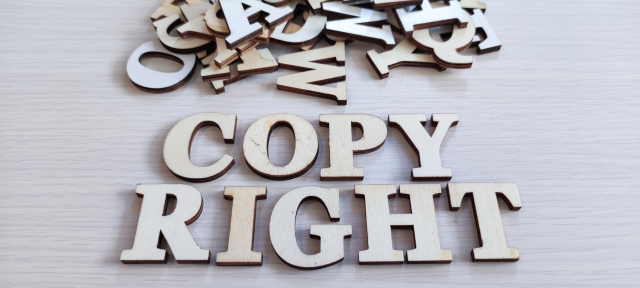
One of the most familiar types of intellectual property is "copyright". For example, when creating materials for work, have you ever quoted data or words from the internet? Have you ever felt anxious, thinking "Does this constitute copyright infringement?"
This time, we will focus on copyright, which you may think you know but actually don't. We will introduce the overview of copyright, points to keep in mind when dealing with copyrighted materials, and examples of copyright infringement, and explain the key points to prevent copyright infringement.
1. Copyright and Works You Should Know
Intellectual property rights protect the results of people's wide range of intellectual creative activities, including "copyright" which protects cultural and spiritual creations, "industrial property rights" such as patent rights, utility model rights, design rights, and trademark rights, and "others" which are broadly classified.
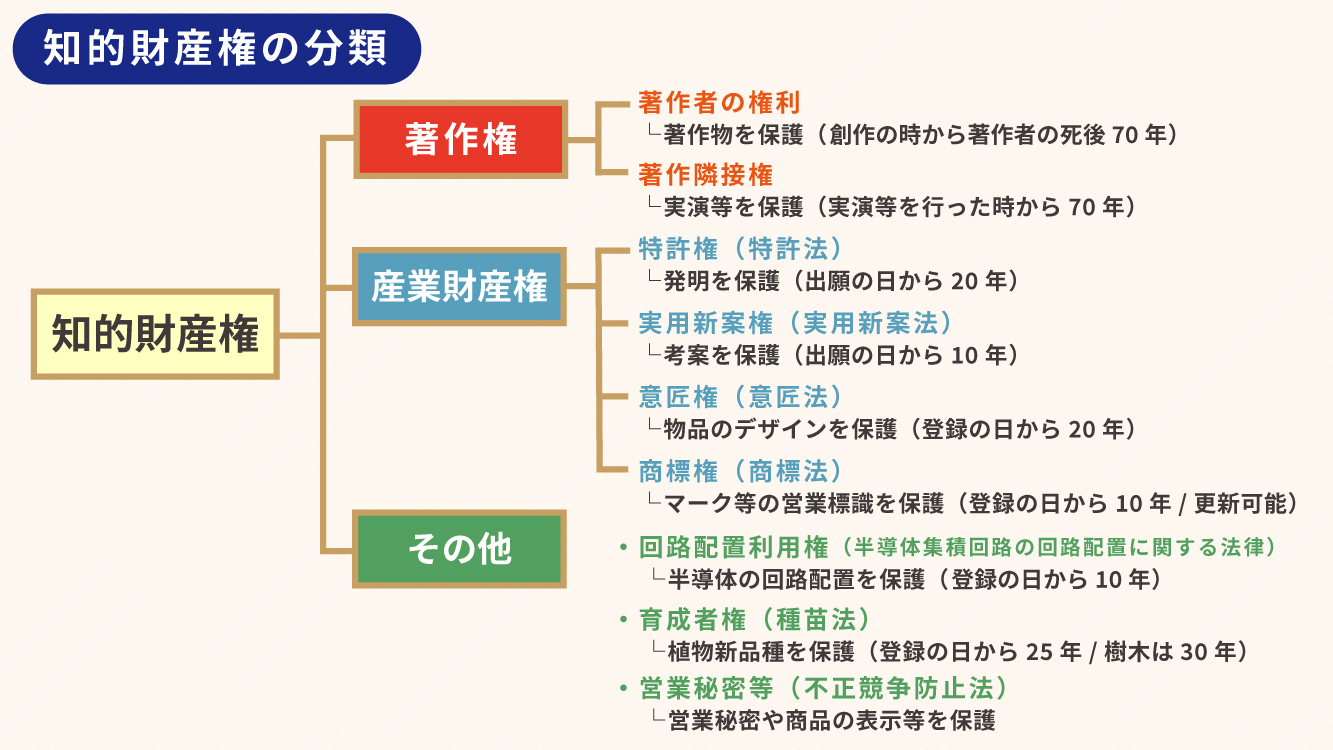
[Source: Agency for Cultural Affairs] About Intellectual Property Rights (https://www.bunka.go.jp/seisaku/chosakuken/seidokaisetsu/chitekizaisanken.html)
Industrial property rights, such as patents, require procedures such as application and registration to obtain rights. However, copyright does not require any such procedures and is automatically granted at the time of creation, which is considered an international rule. Therefore, the "borderline of rights" is ambiguous and difficult to understand, and there are many cases where it is difficult to determine what constitutes copyright infringement.
First, let's deepen our understanding of what copyright is.
●What is Copyright?
We enjoy our daily lives by gaining knowledge through the internet and reading, watching videos and TV, and appreciating various information and entertainment. These creative works such as literature, academia, art, and music are called "works" as the creators express their thoughts and emotions in their works. The creator of a work is called a "copyright holder" and the rights granted to the copyright holder are called "copyright". Protecting copyright is a way to reward the efforts and struggles of the creators who have created the work, and it aims to promote the development of Japanese culture.
In addition, the rules for copyright are established by the "Copyright Law".

●What is a work
In order for a work to be protected under copyright law, it is necessary to fulfill all of the following requirements.
【1】"Represents thoughts or emotions"
→ Excludes mere data
【2】Being an "expression" of thoughts or emotions
→ Ideas and the like are excluded
【3】Being able to express thoughts or emotions in a "creative" way
→ Mere imitation of others' works is excluded.
【4】"Belongs to the scope of literature, academia, art, or music"
→ Excludes industrial products
As an example of works, the following are specifically listed.
Works of language...novels, scripts, essays, poetry, haiku, speeches, etc.
Works of music...songs with accompanying lyrics
Works of dance and pantomime...Japanese dance, ballet, dance, choreography, etc.
Works of art...paintings, sculptures, comics, calligraphy, stage sets, etc. (including art crafts)
Works of architecture...artistic structures (blueprints are considered works of geometry)
Works of maps and diagrams...maps or academic diagrams, charts, blueprints, models, etc.
Works of photography...photographs, gravure, etc.
Works of film...theatrical films, TV programs, video software, game software, video content uploaded to video sites, etc.
Works of programming...computer programs
In addition, secondary works (works that have been translated, arranged, transformed, or adapted from the above works), edited works (encyclopedias, dictionaries, newspapers, magazines, etc.), and database works (edited works that can be searched on a computer) are also considered as works.

2. Copyright Law Protecting Two Rights
The contents of the Copyright Act are divided into two main parts. One is the "moral rights of the author" to protect the personal interests of the author. The other is the "copyright (property rights)" to protect the financial interests.
【Moral Rights of Authors】
This is the right to protect the personality of the author expressed through their work. Moral rights of authors can only be held by the author and cannot be transferred or inherited. In principle, moral rights of authors expire upon the death of the author, but it is still prohibited to infringe upon these rights even after their death.
〈Types of Moral Rights of Authors〉
・Right of Disclosure... The right for the author to decide whether or not to disclose their work, and if so, when and how to disclose it
・Right of Attribution... The right for the author to decide whether or not to display their name on their work, and if so, whether to use their real name or a pseudonym
・Right of Integrity... The right for the author to prevent their work from being altered or modified without their consent
[Copyright (Property Rights)]
This is the right to prohibit others from using it without permission in order to protect the economic interests of the author. Unlike moral rights, it is possible to transfer or inherit some or all of the rights to a third party.
〈Types of Copyright (Property Rights)〉
・Reproduction Right...The right to "physically reproduce" a work through printing, photography, copying, recording, etc.
・Public Performance/Performance Right...The right to publicly perform or play a work
・Screening Right...The right to publicly screen a work
・Public Transmission/Transmission Right...The right to transmit or broadcast a work through television, radio, internet, etc.
・Oral Presentation Right...The right to orally communicate a work to a large number of people through methods such as recitation
・Exhibition Right...The right to publicly exhibit works of art or photographs (unpublished)
・Distribution Right...The right to sell or lend a work of film
・Transfer Right...The right to provide works other than films or their reproductions to the public through methods such as sales
・Lending Right...The right to lend reproductions of works other than films to the public
・Translation Right/Adaptation Right, etc....The right to create derivative works through translation, arrangement, transformation, adaptation, etc.
・Rights of the Original Author Regarding the Use of Derivative Works...The rights held by the original author regarding the use of derivative works created from their own work (original work)
3. Points to Note When Handling Copyrighted Materials in Business
We have explained the overview of copyright and copyright law so far, but what specific points should be aware of in business? In this chapter, we will explain the points that companies should be aware of when dealing with copyrighted materials.
●Permission from the author is generally required when using copyrighted materials. However, there are exceptions.
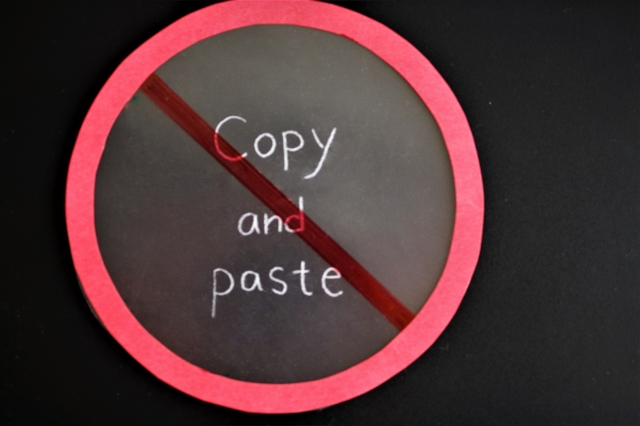
In order to use copyrighted materials, it is generally necessary to obtain permission from the author. However, there is an exception provision that states, "If used within a limited scope such as for personal or household use, it is not considered copyright infringement and copying is possible without permission" (Article 30, Paragraph 1 of the Copyright Act). This is referred to as "private use" of copyrighted materials.
What about using it for business purposes? Let's consider a case where you create internal materials using copyrighted materials. Sharing the materials with only a few employees may be considered "personal use" and may not be considered copyright infringement. However, creating materials is a business activity. It cannot be considered personal use, and if used without permission, it may be considered copyright infringement. That's where "quoting copyrighted materials" becomes the key to solving the problem.
●There are requirements for quoting works
According to Article 32, Paragraph 1 of the Copyright Act, "even if a copyrighted work is used as a quotation, it does not constitute copyright infringement." In other words, even if a work is used for business purposes, as long as it is used as a quotation, it does not constitute copyright infringement and does not require the permission of the copyright holder. However, in order for the use of copyrighted material to be considered a quotation, all of the following requirements must be met.
【Requirements for Copyright Quotation】
〈1〉There is a necessity for quotation
〈2〉Clear distinction between the quoted part and the rest
〈3〉The main text is the primary source, and the quoted part is secondary
〈4〉No modifications have been made to the quoted part from the original
〈5〉Indication of the source (author's name, publisher's name, date of publication, page number, etc.)
For example, when it comes to , if the quoted portion occupies the majority, it may be considered that the master-slave relationship is reversed, so caution is necessary. Also, adjusting the quoted text or illustrations without permission may constitute a violation of copyright under . When quoting, keep in mind the five requirements and carefully consider them.
● Be sure to read the terms and conditions even for "free materials".
Many people use free materials for illustrations and images that are attached to documents. Free materials can generally be interpreted as materials that can be used freely and for free, but it is not always the case that the author has waived all rights. For example, there may be restrictions such as prohibiting commercial use or requiring contact with the rights holder or credit notation. These materials may have different terms and conditions depending on the website, so be sure to check the scope of the license before using them.

●Be aware of copyright when using SNS
Recently, it has become common for companies to use social media for public relations and PR activities. Of course, even when using social media, it is important to be aware of copyright. For example, sharing recommended books (※) on social media may potentially constitute copyright infringement. This is because Article 23, Paragraph 1 of the Copyright Act states that "the author shall have the exclusive right to make available to the public (including making available by means of automatic public transmission)" and this "making available to the public" includes not only television, radio, and web content, but also social media posts.
In other words, posting copyrighted material on social media without permission would constitute a violation of the right to make available to the public, and could result in being accused of copyright infringement. Additionally, taking photos of books and using the image data would also constitute a violation of the right to reproduce under Article 21 of the Copyright Act.
(*) The content of the book, as well as the cover, will be considered as copyrighted material.
4. Examples of Copyright Infringement in Corporations
Copyright is a very familiar presence in corporate activities. Therefore, it is possible for "carelessness" to lead to unexpected troubles. Here, we will introduce examples of copyright infringement in companies.
Compensation order to posting company for unauthorized reproduction of residential map
A posting company was sued for copyright infringement for illegally duplicating and distributing a large number of housing map products issued by a company that manages and sells map information. In a ruling issued in May 2022, the court recognized the housing map products as copyrighted works and ordered the posting company to cease the infringement and pay damages.
The Tokyo District Court determined that the housing map products are considered copyrighted works under the copyright law, as they select and display necessary information for housing maps in a way that is deemed more user-friendly.
Newspaper company sues railway company for unauthorized use of article
The railway company has been digitizing newspaper and distribution articles without permission since its opening in August 2005 until April 2019. These were then posted on the company's internal intranet, where all employees could access them, resulting in copyright infringement of the newspaper company for approximately 14 years. The number of articles totaled to about 4,200, and the newspaper company has filed a lawsuit against the railway company for damages of approximately 35 million yen, including usage fees. Additionally, the railway company is facing another lawsuit for similar copyright infringement from a different newspaper company.

In any case, it can be said that understanding copyright could have prevented trouble. This is an example that highlights the importance of compliance measures and employee education in preventing careless copyright infringement by employees.
5. To prevent copyright infringement
Actions in the workplace can unintentionally violate copyright, which can happen to anyone. However, as seen from examples of copyright infringement, the penalties are not light. That is why it is necessary for each employee to acquire the correct knowledge about copyright.
In addition, the Copyright Act has been revised in 2020 to reflect the current social background, including strengthening regulations on illegal downloads and countermeasures against reach. Therefore, it is important to regularly learn the correct knowledge as information is updated daily.
Therefore, we would like to propose e-learning as an efficient learning solution. Compared to paper materials, it allows for quick updates and the ability to learn fresh information. Additionally, since it is online, it has the advantage of being able to learn quickly during spare time while on the go without being restricted by time or location.
Human Science's e-learning materials "Compliance Measures in Corporations: Basic Knowledge" covers the basic knowledge of compliance in general. Through learning, we support understanding the importance of compliance and taking conscious actions on a daily basis. In addition, by learning together with "Compliance Measures in Corporations: Practical Edition" where you can learn practical knowledge in more specific scenes, you can expect a deeper understanding and retention.
In our materials, we regularly review and update the content, and add new courses. By the end of the year, a new course including copyright will be added, allowing for a wider range of learning. In addition, we can also customize the content to better match the actual situation of each company based on customer requests.
In today's rapidly advancing information society, laws and morals related to compliance, including copyright, are expected to be updated in line with the trend. In order to raise employee awareness and avoid unexpected troubles, it is recommended to regularly conduct in-house training through e-learning and acquire the latest knowledge.
Author:
Shizuko Sase
Education Solutions Department Production Group Writer
After joining Human Science, worked as a Technical Writer,
experienced in designing and writing product manuals and operation manuals.
Later, engaged in writing and directing e-learning material manuscripts.
Involved in the production of approximately 200 learning materials so far.
Contact Us:
Phone Number: 03-5321-3111
hsweb_inquiry@science.co.jp
Latest Blog
- 2024.04.02
- English Learning Using Moodle and ChatGPT




